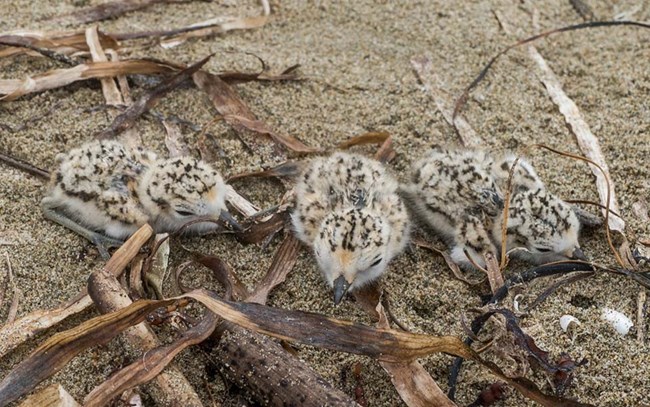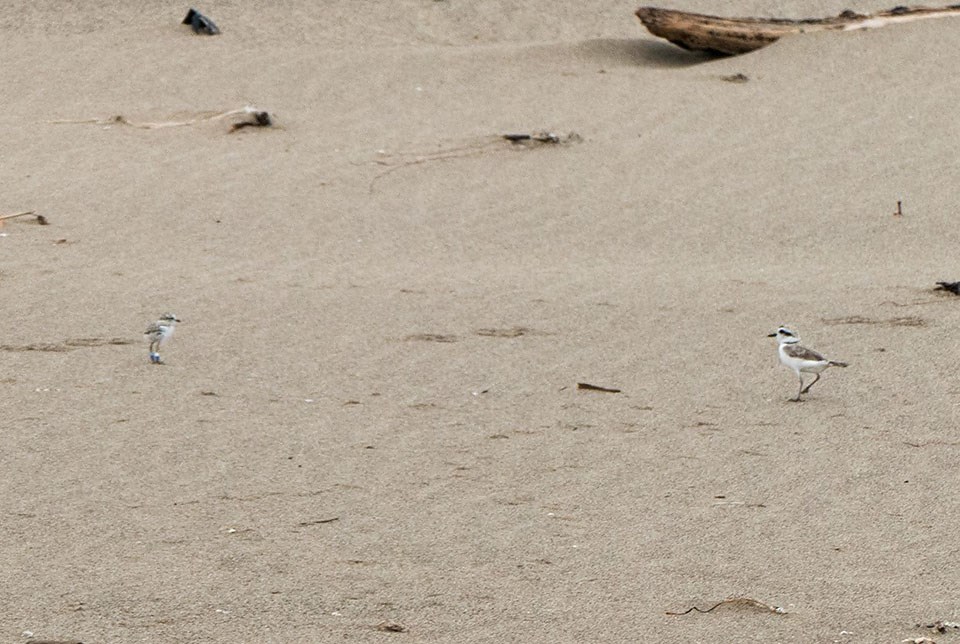Last updated: July 31, 2017
Article
2017 Snowy Plover Breeding Season Slows Down

NPS / Matt Lau
Matt Lau, Snowy Plover Ecologist
The 2017 Western Snowy Plover breeding season in Point Reyes National Seashore is on its last stretch! Although the plover monitoring team has had a lot of excitement this week with four new nest hatches, the season appears to be slowing down. Winter flocks are already beginning to form and only one new nest has been found in the past two weeks.
Since April, we have had a total of 46 nests on Great Beach and Limantour Beach. Of those, 19 have hatched. We’ve lost both chicks and many nests to predators, namely Common Ravens and skunks. Yet there is still hope! We currently have 20 chicks running around on the beaches, ranging from a day old to three weeks old. It takes approximately 28 days from hatch until chicks are fledged (i.e., able to fly and survive without help from their parents). Also, as of July 28, five nests on Limantour Beach and North Beach are still active.

NPS / Matt Lau
Plovers nested in some notable locations this year. We had a single nest on the section of beach between North and South Beach parking lots. This is especially exciting because there has been only one other nest recorded in this area since 1995. For the first time in over 12 years, Snowy Plovers also decided to nest on a portion of beach between the Limantour Beach parking lots, where visitor traffic is high. In response, we have erected a large fenced area to protect nesting habitat and nest exclosures (fences designed to let plovers in and out, but exclude predators) around nests. In total, we found five nests in this area. Three of these nests were preyed upon by skunks in spite of the exclosures! We believe baby skunks were able to squeeze through the small windows in the exclosure to get inside. There was evidence of digging into another nest exclosure by an adult skunk. For this reason, we decided to not exclose the last nest remaining in that area, to prevent skunks from associating exclosures with easy meals. In addition to fencing, we have increased volunteer docent presence at the trailheads and put up more signage about the park’s dog leash laws and nesting plovers.
For more information on Western Snowy Plovers in Point Reyes, contact Matt Lau.
